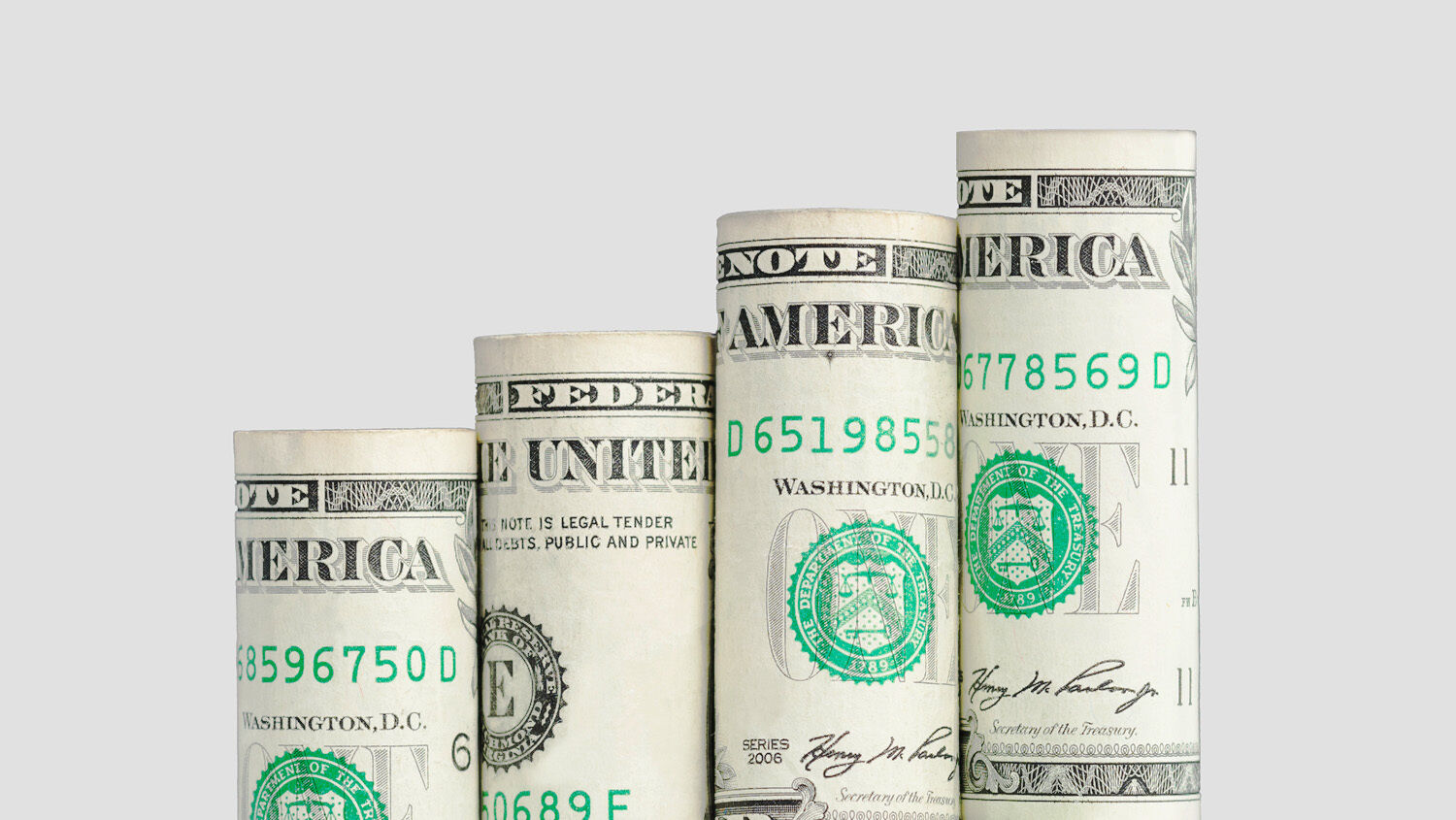
Is the U.S. Dollar Really Getting Stronger?
For nearly a century, the United States dollar has reigned supreme. About 52 percent of international trade is conducted in dollars. About 59 percent of central bank foreign exchange reserves are held in dollars. More than 60 percent of the world’s debt is denominated in dollars. Yet the Biden administration’s reckless spending is jeopardizing the dollar’s reserve currency status.
In a sit-down interview with Fox Business’s Larry Kudlow, President Donald Trump warned that American power was “waning” in terms of its currency and that the dollar’s fall as the world’s reserve currency would be “bigger than losing any war.” Too few are paying attention to this warning.
Many economists, including famed investor Warren Buffet, expect the dollar to remain the reserve currency for decades. They point to the fact that the Dollar Index hit a 20-year high last September as a sign that the dollar is the strongest it has been in a generation. Yet the Dollar Index measures the dollar against a basket of currencies: the euro, Swiss franc, Japanese yen, Canadian dollar, British pound and Swedish krona. It only indicates the dollar is stronger compared to these six currencies.
Anyone who has been to a grocery store recently knows the dollar is losing purchasing power. According to the Consumer Price Index Inflation Calculator, the dollar has lost 20 percent of its purchasing power since the covid-19 pandemic. Meanwhile, the euro has lost 25 percent of its value; the Swiss franc, 5 percent; the Japanese yen, 5 percent; the Canadian dollar, 19 percent; the British pound, 28 percent; and the Swedish krona, 20 percent.
This means all six currencies used to measure the strength of the dollar are getting weaker in terms of purchasing power. In fact, the euro and the pound are weakening so fast that the dollar actually looks strong by comparison. Just because the competition is weak does not mean the dollar is strong.
Many nations are growing uncomfortable using a reserve currency that has lost a fifth of its value in four years, and they are looking for alternatives. The only reason the dollar has not collapsed is that these nations have not found a viable alternative—yet. This situation cannot continue indefinitely.
The main reason the dollar has lost 20 percent of its purchasing power since the pandemic is that 31 percent of all dollars in circulation have been printed in the last four years. The laws of supply and demand dictate that with every dollar created out of thin air, each existing dollar becomes less valuable. Despite temporary measures like interest rate hikes, America’s inflation problem is not going away until the federal government stops creating currency out of nothing. But that is unlikely to happen.
The U.S. government has borrowed $18.4 trillion from domestic creditors, $7.6 trillion from foreign creditors and $6.9 trillion from its Social Security Trust Fund. Last year, it shelled out $476 billion in interest payments on its debt—more than half of what it spent on defense. Data from the U.S. Treasury Department’s Office of Debt Management show that the government is approaching the point where every new dollar it borrows will have to go toward interest payments on the national debt. This is called a debt death spiral, and it will force the government to print the money it can no longer borrow.
When this happens, the entire fiat money system will enter a global crisis. The world will be forced to adopt a new financial system. The laws of supply and demand are unable to predict which nations will lead this system. Yet the “sure word of prophecy” can (2 Peter 1:19).
Revelation 17:12 tells us that 10 European leaders will join together to forge a new superstate more powerful than the United States. Even though the dollar is currently more stable than the euro, the late Herbert W. Armstrong predicted that a financial crisis in America would likely be the catalyst that prompts Europe to unite into a full-fledged superpower. Specifically, he warned that a massive banking crisis in America “could suddenly result in triggering European nations to unite as a new world power larger than either the Soviet Union or the U.S.” (co-worker letter, July 22, 1984).
The U.S. dollar’s strength is an illusion produced by viewing the dollar through the lens of the Dollar Index instead of the Consumer Price Index. The truth is, deficit spending and quantitative easing are destroying the fiat money system and bringing about a world revolution.
To learn more, read “A Bold Warning: America’s Economic Collapse,” by Trumpet editor in chief Gerald Flurry.
